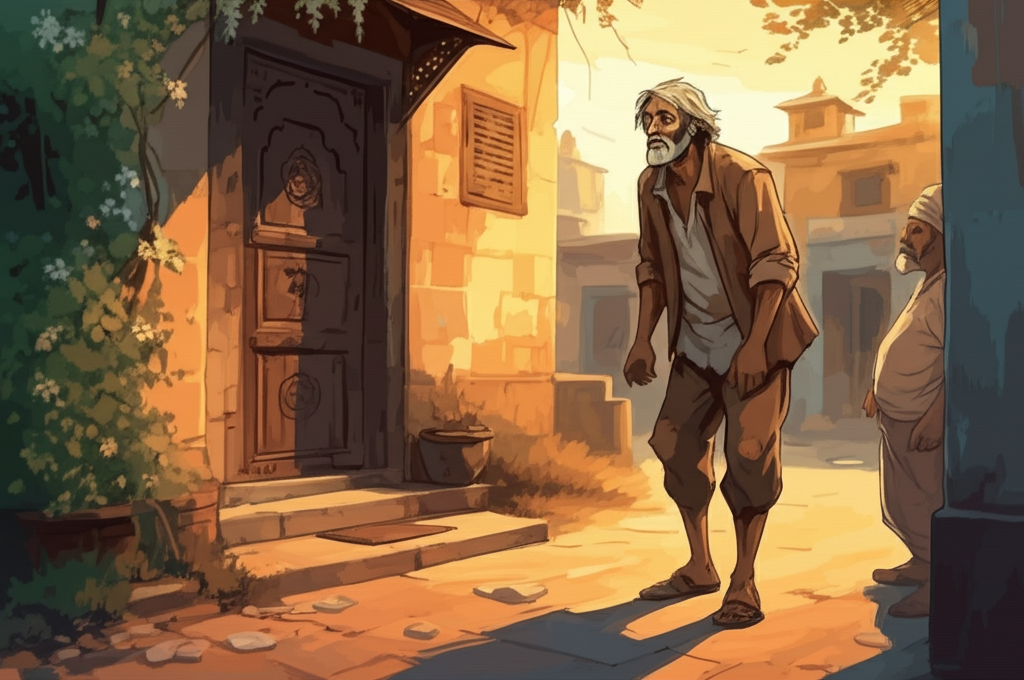
Once upon a time, there was a farmer who had a lot of trouble with a money lender. No matter how good or bad his crops were, the farmer was always poor, and the money lender was always rich. One day, when the farmer didn’t have a single penny left, he went to the money lender’s house and said, “You can’t get anything from me anymore, so maybe you can tell me the secret to becoming rich!”
“My friend,” the money lender said in a sweet voice, “riches come from Ram. You should ask him!”
“Thank you, I will!” said the farmer. So, he packed three yummy cakes for his trip and set off to find Ram.
First, he met a Brahman, a wise man, and gave him a cake, asking him to show him the way to Ram. But the Brahman just took the cake and walked away without saying anything.
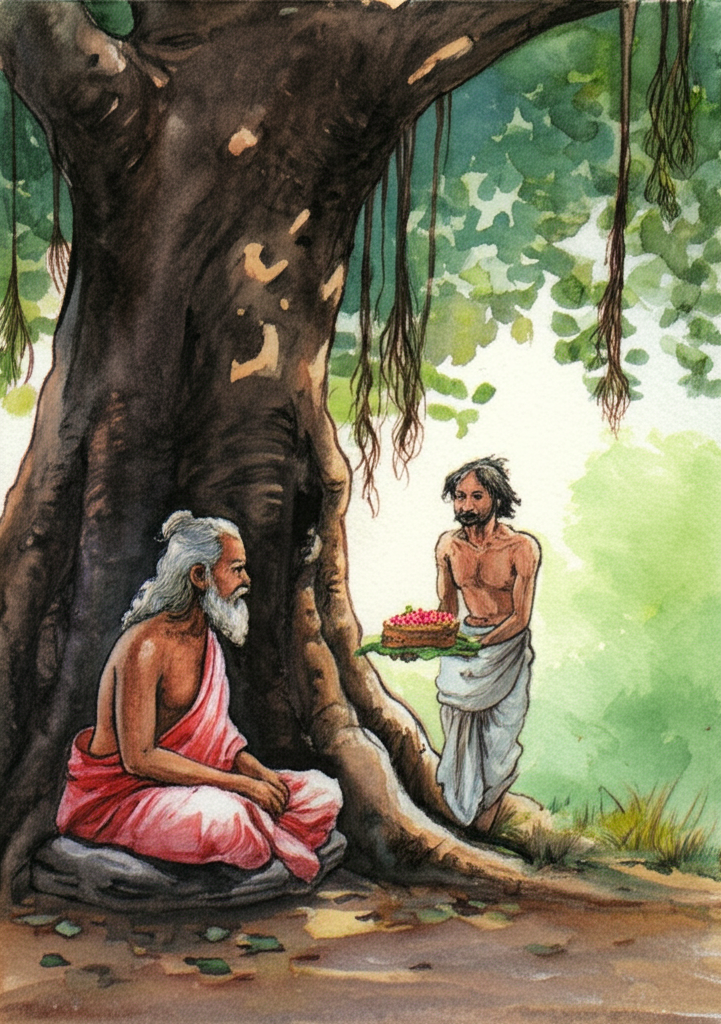
Then, the farmer met a Jogi, someone who prays a lot, and gave him a cake too, but he didn’t get any help either. Finally, he saw a poor man sitting under a tree. The farmer could tell he was hungry, so he gave him his last cake. Then he sat down next to him to rest and chat.
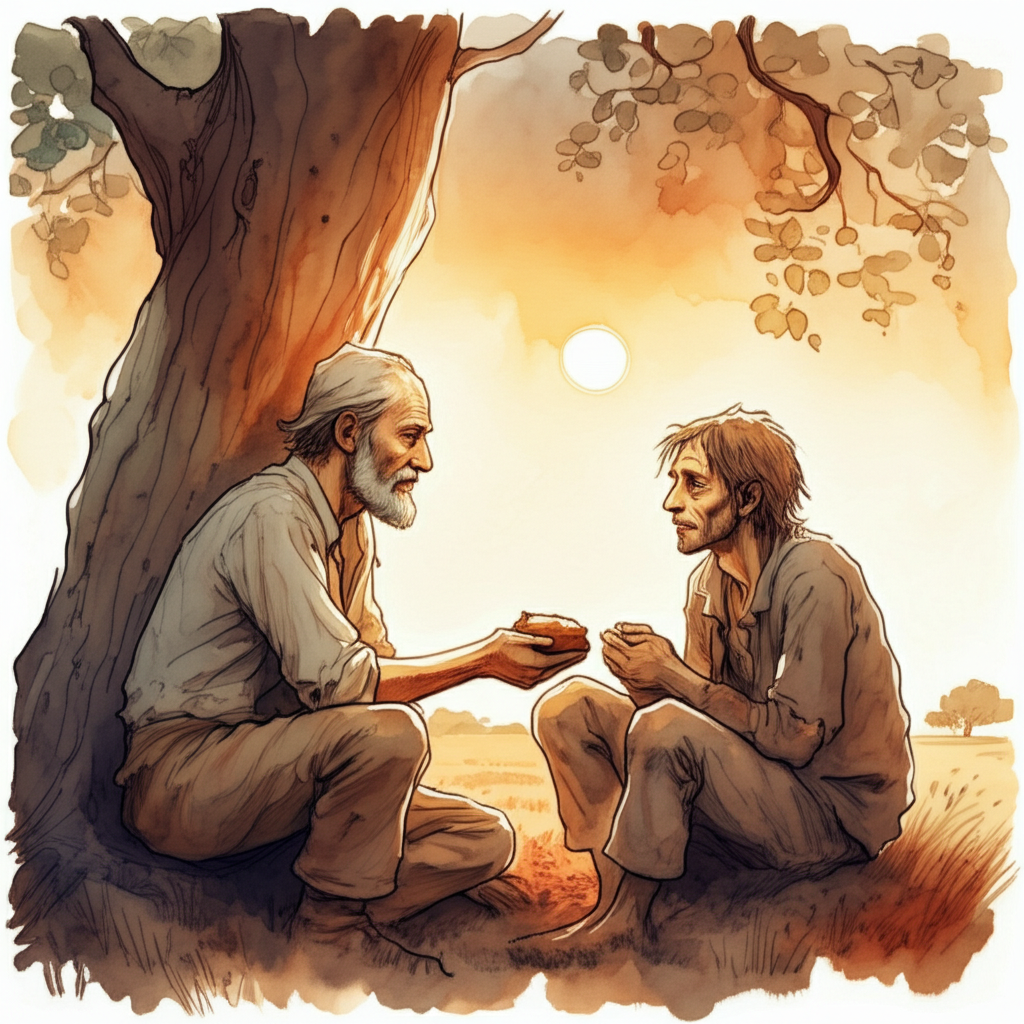
“Where are you going?” the poor man asked.
“Oh, I have a long trip ahead of me. I’m going to find Ram!” the farmer said. “I don’t suppose you know which way to go?”
“Maybe I do,” the poor man said with a smile, “because I am Ram! What do you want from me?”
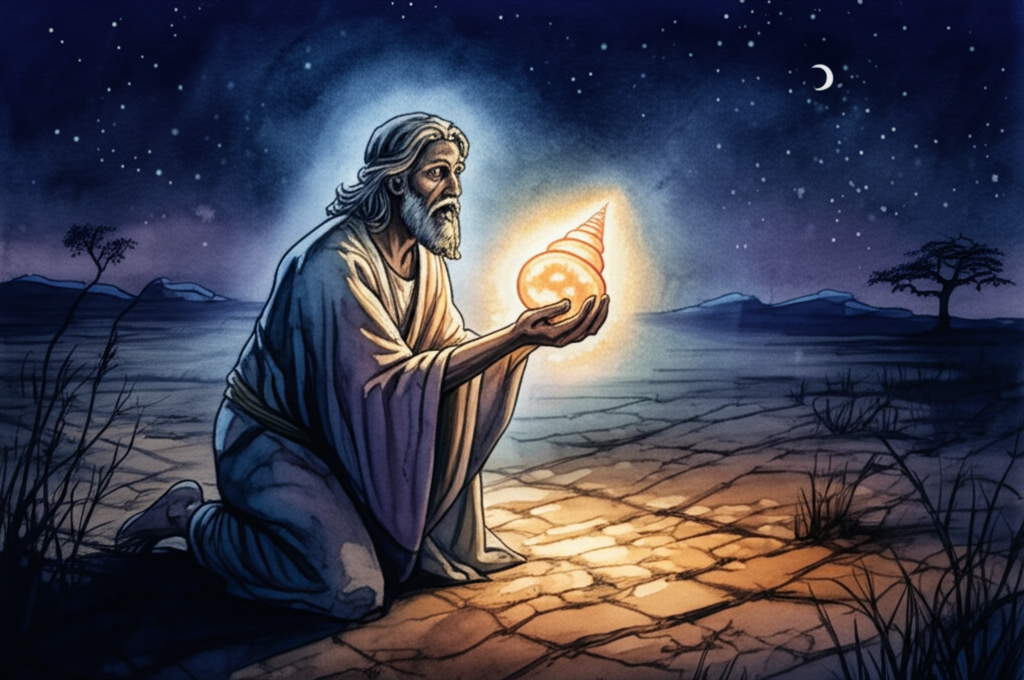
The farmer told Ram everything. Ram felt sorry for him and gave him a special seashell called a conch. He showed the farmer how to blow it in a special way and said, “Remember, whatever you wish for, just blow the conch like this, and you’ll get it! But be careful of that money lender because even magic can’t always beat their tricks!”
The farmer went back to his village, so happy!

The money lender saw how happy he was and thought, “Something good must have happened to that silly farmer to make him so cheerful.” So, he went to the farmer’s house and pretended to be happy for him, saying he’d heard all about it. Before long, the farmer was telling him the whole story—except for the secret way to blow the conch. Even though he was simple, the farmer wasn’t silly enough to share that!
But the money lender really wanted that conch! He was sneaky enough to do anything to get it.
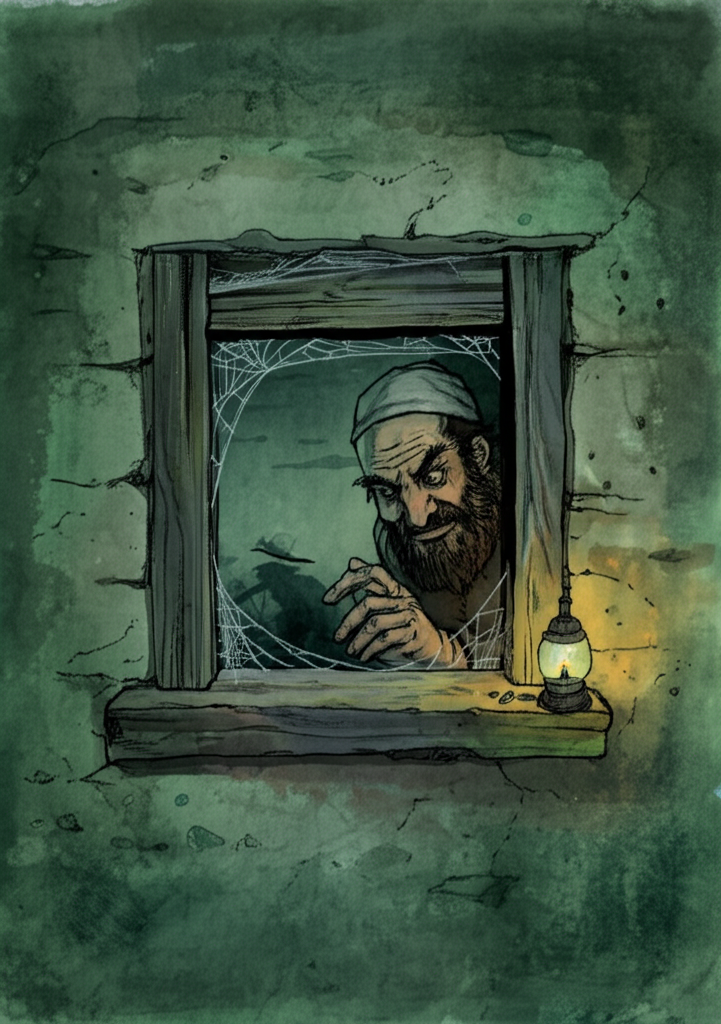
So, he waited for the right moment and stole the conch!
He tried blowing it every which way, but it didn’t work. He couldn’t figure out the secret! So, he went back to the farmer and said, “Listen, I have your conch, but I can’t use it. You don’t have it, so you can’t use it either. We need to make a deal. I’ll give you back your conch and never bother you about using it if you promise me that whatever you get from it, I get double!”
“Never!” the farmer cried. “That would be just like before!”
“Not at all!” the sneaky money lender said. “You’ll still get your share! If you get everything you want, what does it matter if I’m rich or poor?”
Finally, the farmer gave in, even though he didn’t want to help the money lender at all. From then on, whatever the farmer got from the conch, the money lender got twice as much! The farmer felt terrible about this all the time and couldn’t enjoy anything.
Then, one year, it didn’t rain for a very long time, and the farmer’s crops started to die. So, he blew his conch and wished for a well to water them. Suddenly, there was a well! But the money lender had two wells! Two beautiful, brand new wells!
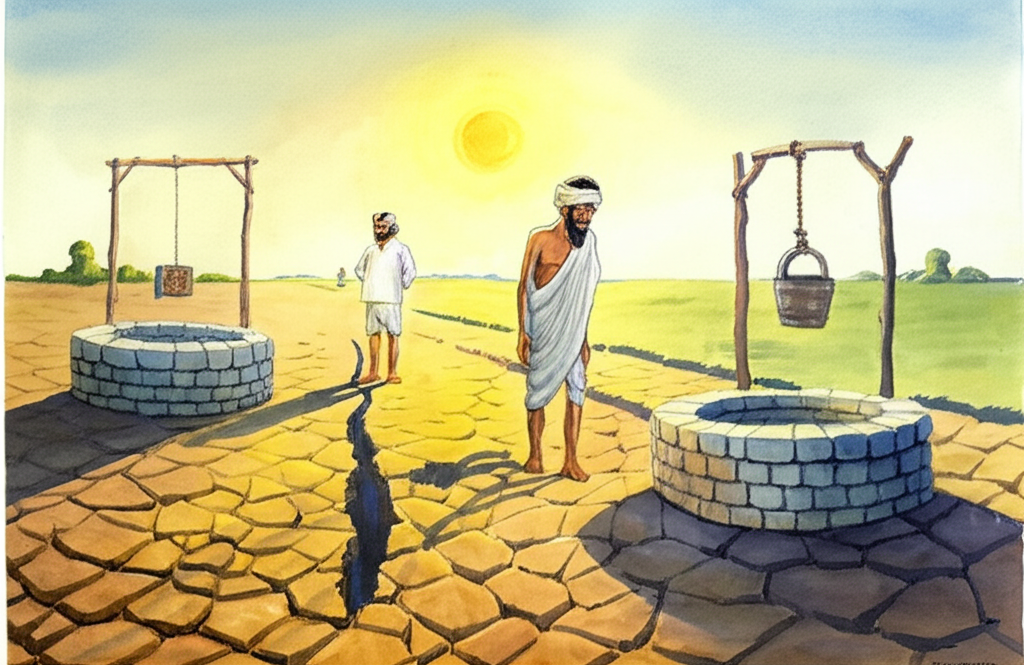
This was too much for the farmer. He thought and thought about it until he had a great idea! He grabbed the conch, blew it loudly, and shouted, “Oh, Ram! I wish to be blind in one eye!”
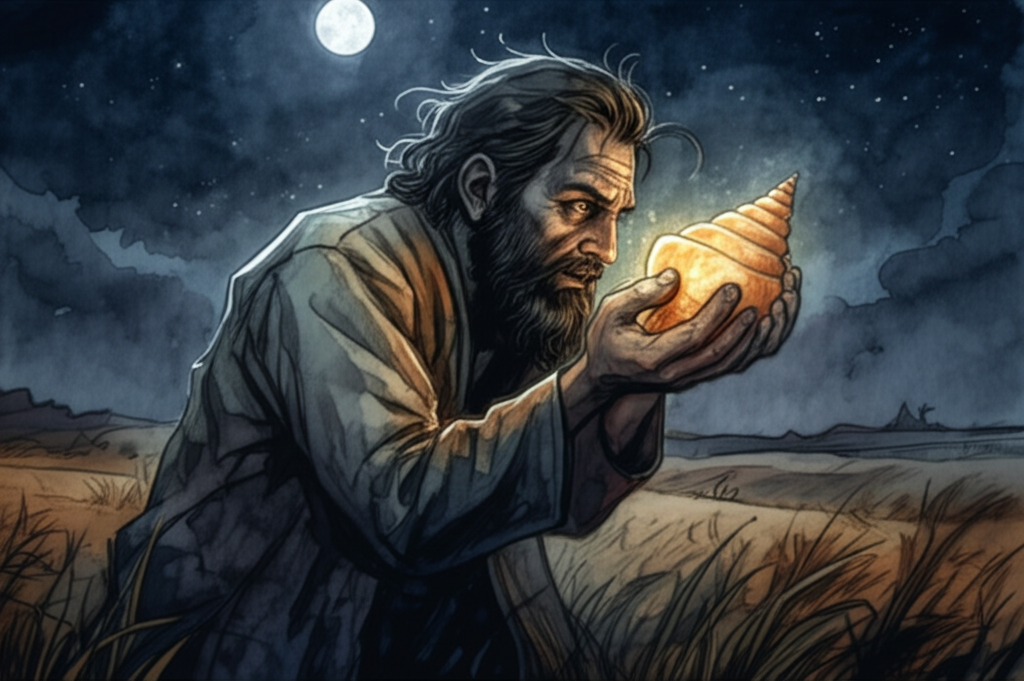
And just like that, he was. But the money lender, of course, was blind in both eyes! He tried to walk between his two new wells, but he fell into one and drowned!
So, this story shows that a farmer once tricked a money lender—but he had to lose one of his eyes to do it!